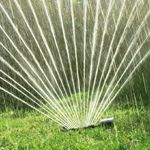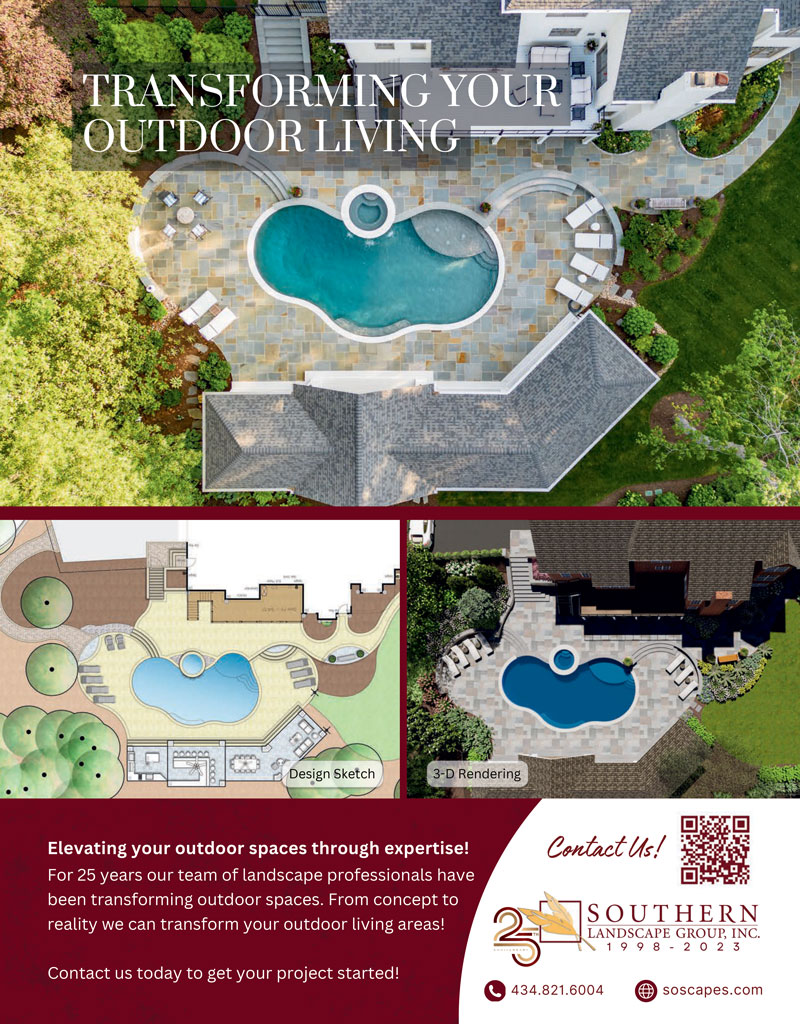Smarter Sprinklers: Options to Quench Your Lawn’s Thirst

 It’s wonderful when Mother Nature supplies us with enough water and moisture to keep our lawn and garden areas lush, green and healthy. While we love those summer storms that give our grounds a thorough soaking, we often see scorching heat and dry spells during our Central Virginia summers. Our landscapes may need a little help from us in order to thrive.
It’s wonderful when Mother Nature supplies us with enough water and moisture to keep our lawn and garden areas lush, green and healthy. While we love those summer storms that give our grounds a thorough soaking, we often see scorching heat and dry spells during our Central Virginia summers. Our landscapes may need a little help from us in order to thrive.
Portable sprinklers deserve a spot in every homeowner’s arsenal against summer heat. For homes without in-ground irrigation systems, portable sprinklers can meet overall watering needs. Even if you do have an irrigation system, a portable sprinkler can help with hard-to-reach spots, newly planted grass, certain landscape beds or vegetable gardens.
Portable sprinklers typically connect to a standard garden hose. When searching for the right sprinkler, first consider the area to be covered. You should have an approximate measurement of how many square feet you’ll want to water. Information about area coverage is usually detailed on the outside of the sprinkler’s packaging. While many portable sprinklers are made of lightweight plastic, it’s best to go for one made of heavy-duty components. While inexpensive sprinklers can be found for less than $20, some may only be durable enough for one season of use. More durable choices cost $30 to $40 and more.
 When choosing a sprinkler, look for one with sturdy legs and base support. Sprinklers with a wider stance are easier to position, and will be less likely to move out of place or tip over from water pressure. The most versatile sprinklers have a number of watering positions and multiple settings. Ideally, a sprinkler should be able to pulsate water in one specific direction, and oscillate (similar to many household fans) for extended coverage. Many come equipped with timers so that watering can be controlled, set to work during the most beneficial time of day. The optional settings range from full stationary sprinkling to a variety of sweeping motions, and from full area coverage to center, or left/right-side coverage. Adjustable spray tips are another option, and “rustproof” and “impact-resistant” are additional attributes to seek in a sprinkler. Rotary sprinklers are another option, perfect for small areas. They are fully adjustable, from a small mist pattern to a sharp, steady stream.
When choosing a sprinkler, look for one with sturdy legs and base support. Sprinklers with a wider stance are easier to position, and will be less likely to move out of place or tip over from water pressure. The most versatile sprinklers have a number of watering positions and multiple settings. Ideally, a sprinkler should be able to pulsate water in one specific direction, and oscillate (similar to many household fans) for extended coverage. Many come equipped with timers so that watering can be controlled, set to work during the most beneficial time of day. The optional settings range from full stationary sprinkling to a variety of sweeping motions, and from full area coverage to center, or left/right-side coverage. Adjustable spray tips are another option, and “rustproof” and “impact-resistant” are additional attributes to seek in a sprinkler. Rotary sprinklers are another option, perfect for small areas. They are fully adjustable, from a small mist pattern to a sharp, steady stream.
Another alternative type of sprinkler is called the traveling sprinkler. Traveling sprinklers are designed to be used on lawns, sports fields, city parks, cash crops, commercial sites, arenas or pastures. They are typically used when underground sprinkler systems are either impractical or too costly. The larger sprinklers in this group are marketed specifically for commercial use and can cost $1,000 or more — but this might be a good option if you have a lot of land to cover. Much less expensive residential options are available, however. Made of heavy-duty die-cast iron, traveling sprinklers for the home are available in many unique designs. Some of the most popular models for residential use are designed to resemble well-known items, such as fire trucks and John Deere tractors, making them both functional and fun. They are self-propelled and follow along the path of your hose. Simply lay the garden hose where you want the sprinkler to travel. The sprinkler has an angled roller which moves with the force of the water. These make an excellent choice for irregularly shaped lawns. Prices range from approximately $38 to $79 and more at your local home center stores or online.
For larger lawns, some manufacturers produce sprinklers that can be mounted on carts. This type of sprinkler is certainly a great choice when mobility is a factor. It eases the burden of moving a long length of hose a great distance. They are great for gardening and general residential use, and are also used for dust control around playgrounds and sports fields.
 An easy approach to maintaining superior gardens and landscape beds is to use a soaker hose. Soaker hoses can save time and money when it comes to enhancing garden landscapes.This type of hose, starting around $20, also does the hard work for you. Place it in the desired location and cover it with mulch or loose soil, or tuck it under the leaves near the base of a thirsty plant. Water seeps out of the soaker hose and is delivered directly to the plant’s base and roots, where water is needed most. These hoses work best when positioned on a flat, level surface, making them a great choice for vegetable gardens, low-growing flower beds, and areas with groundcover plantings.
An easy approach to maintaining superior gardens and landscape beds is to use a soaker hose. Soaker hoses can save time and money when it comes to enhancing garden landscapes.This type of hose, starting around $20, also does the hard work for you. Place it in the desired location and cover it with mulch or loose soil, or tuck it under the leaves near the base of a thirsty plant. Water seeps out of the soaker hose and is delivered directly to the plant’s base and roots, where water is needed most. These hoses work best when positioned on a flat, level surface, making them a great choice for vegetable gardens, low-growing flower beds, and areas with groundcover plantings.
Recent summers in Central Virginia have been fairly hot and dry. Fortunately, we have not recently experienced watering bans like many other areas of our state. While we should always be mindful of our natural resources, we are fortunate to be able to use sprinklers to deeply water our gardens and provide much-needed moisture to specific areas of our lawns during the dry season.






